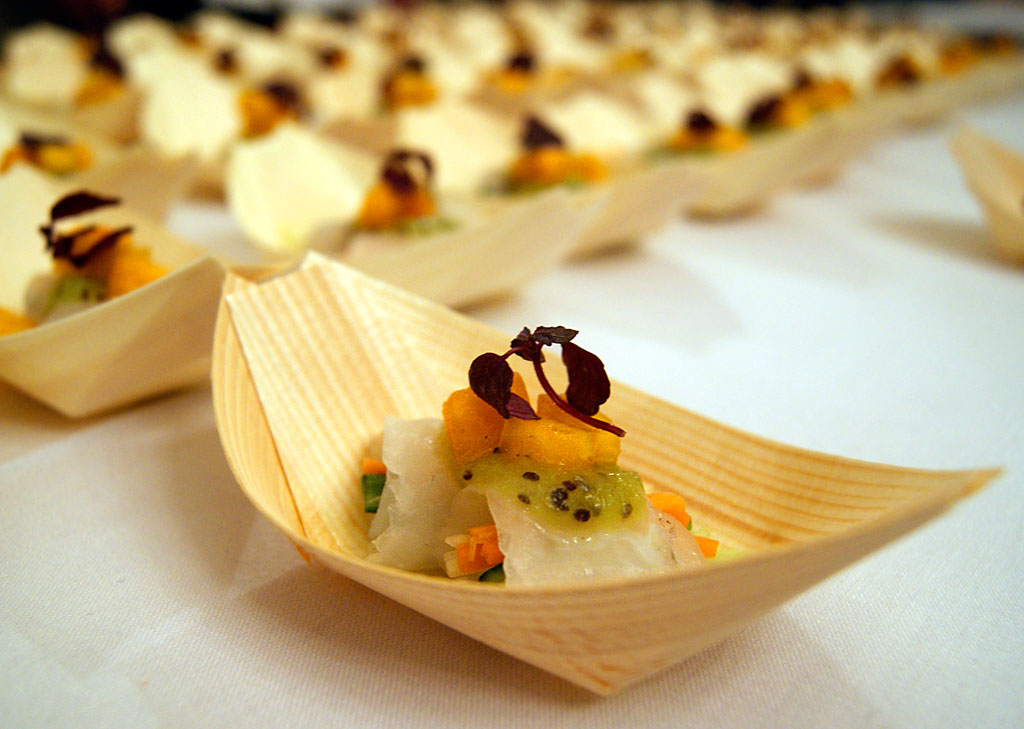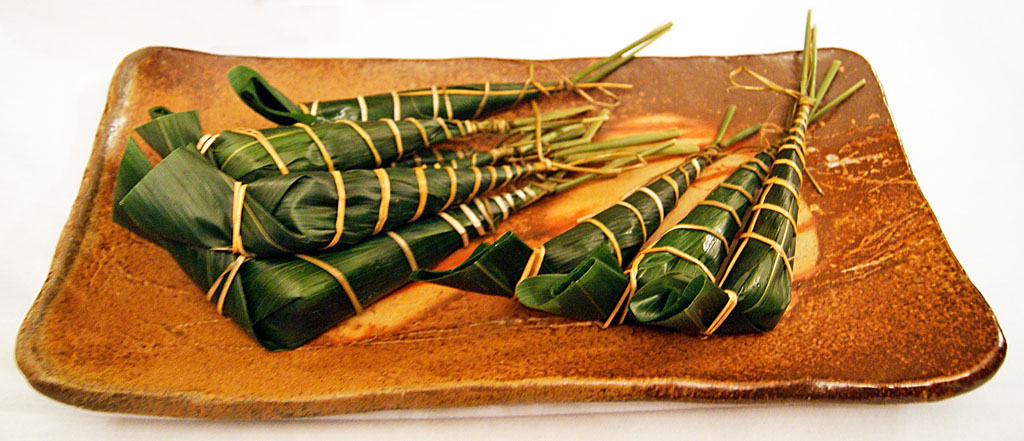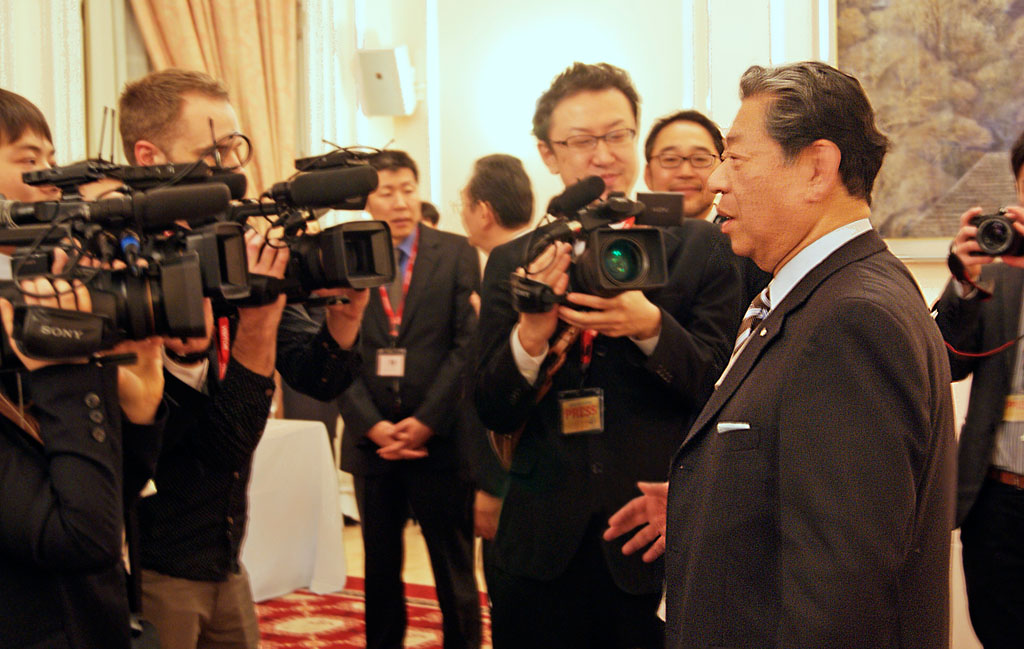Top Chefs and Restaurants Celebrate UNESCO Inscription of Washoku
In December 2013, “washoku”, traditional Japanese cuisine, was inscribed on the UNESCO Representative List of the Intangible Cultural Heritage of Humanity. Washoku, a term which literally means “Japanese food”, was judged worthy of inscription because of its spirit of respect for nature, which is closely related to the sustainable use of natural resources, and the fundamental importance of washoku to Japanese social structure and tradition.
To mark the inscription, the Embassy of Japan in the UK hosted a very special evening, sponsored by the Norinchukin Bank, and supported by Sake Samurai, Sozai Cooking School, and the Japanese Culinary Academy. The evening began with a panel discussion on washoku and its influence on British cuisine between Chefs Murata and Blumenthal, chaired by chef and broadcaster Sybil Kapoor. The two chefs have an established relationship, dating back to when Blumenthal first became interested in umami—his interest led him to the Umami Information Center, which in turn introduced him to Murata.
Chef Murata talked about the importance of umami, the fifth taste, in Japanese food. It is this umami, imparted from amino acids (primarily glutamate, inosinate, and guanylate), which allows Japanese food to be so satisfying while still being low in calories—there’s hardly any of the animal fat or vegetable oil found in other cuisines. Dashi, the stock used in so many Japanese dishes, is rich in umami, being made from a combination of umami-rich ingredients: kombu (kelp), katsuo (dried bonito), and shiitake mushrooms. Umami is still a fairly recent concept in British cooking, but Heston was inevitably at the forefront of its popularisation, most notably with his Sound of the Sea dish, designed to be an intense umami punch—combined with literal sounds of the sea, played through an iPod on the side.
Umami is also central to sake; sake has a higher amino acid level than wine, for example. The high volume of amino acids is part of the reason why sake goes so well with food—when combined, umami-imparting amino acids have a synergistic effect, boosting the umami effect resulting in enhanced levels of perceived gustatory satisfaction. The significance of umami-rich sake as a perfect complement to washoku was also discussed by the two chefs.
After the panel discussion, guests were treated to a selection of specially-created tasting dishes from eight of London’s leading Japanese restaurants, and the Japanese Culinary Academy, an educational organisation led by Chef Murata. Dishes included kombu (kelp) cured arctic char sushi wrapped in bamboo leaf, from UMU, stuffed homemade salmon with edamame paste, from SO Restaurant, and slow-cooked freshwater eel served with squid ink bread from Yashin. Tasting dishes were washed down with a variety of sake, provided by Sake Samurai and Takara Shuzo.
The Japanese government is hoping that agriculture will be one of its most successful export sectors; the current aim is to double export levels for agricultural products by 2020. The inscription of washoku on the UNESCO list of intangible cultural heritage has bolstered the reputation of Japanese cuisine. Surely, since there is no better accompaniment to washoku, the knock-on effect can only be positive for sake sales, too.








